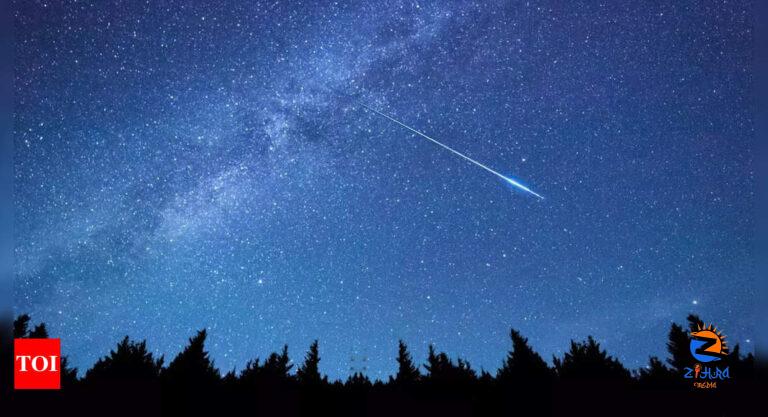
[ad_1]
Best observed from the Northern Hemisphere, the Lyrids are caused by the dusty debris from a comet named Thatcher and spring from the constellation Lyra.
Although, viewers may have a difficult time witnessing this cosmic activity as the moon will be nearly full and shining bright in the night sky.Even in ideal conditions away from city lights, only a few meteors per hour are expected to be visible to the naked eye.
“For a dedicated observer, it may still be worth spotting members of one of the oldest known meteor showers – the Lyrids have been observed for 2,700 years,” NASA wrote in a post.
When and where to see the Lyrid meteor shower
According to EarthSky, the best time to see the meteor shower is overnight Sunday into Monday. Viewers are recommended to go to country and suburban locations here the sky is as dark and clear as possible.
“If you can block out the sight of the moon, yet still have some sky left for seeing meteors, you might see some of the brightest Lyrids blaze past in the bright moonlight,” EarthSky reported. “Remember, even one bright meteor can make your night!”
The Lyrids are known for surges that can bring rates of up to 100 meteors per hour, but viewers are unlikely to see that many this year because of the bright moon, EarthSky notes. Viewers may see 10 to 15 Lyrids per hour in a dark sky with no moon.
What are meteor showers?
Meteor showers are celestial events that occur when numerous meteors, which are space rocks entering Earth’s atmosphere, light up the night sky within a short timeframe. As these meteors plummet through the atmosphere at high speeds, they create luminous trails caused by the heated, glowing air surrounding them.
Although most meteors disintegrate during their descent, a few manage to survive the journey and reach the Earth’s surface. These surviving space rocks are known as meteorites.
In addition to meteor showers, stargazers can look forward to other celestial events this spring. On Tuesday, April’s full moon, known as the Pink Moon, will reach its peak illumination at 7:49 PM EDT. However, it will appear full from Monday morning through Thursday morning, according to NASA.
[ad_2]
